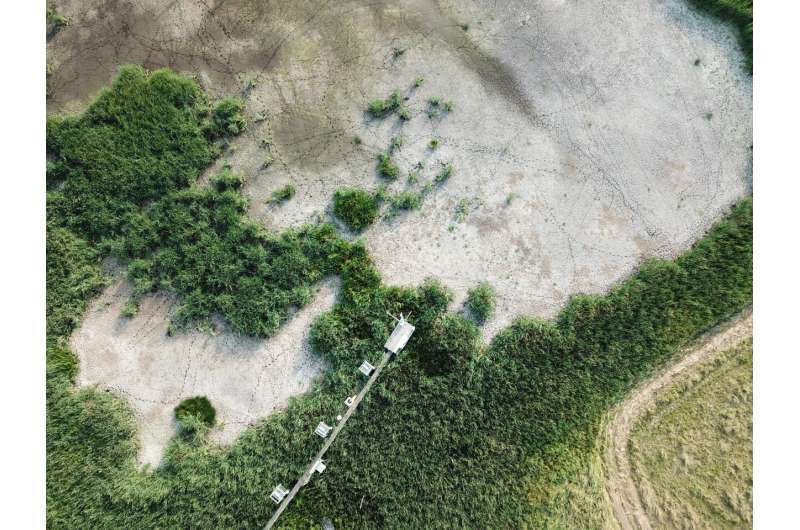New satellite-based measurements reveal vegetation response to drought across the globe

Vegetation can respond to drought through different mechanisms, including changes in the plants' structure and physiology. A new study led by Dr. Wantong Li and Dr. Rene Orth at the Max Planck Institute for Biogeochemistry, Germany, has now disentangled drought response pathways across the globe.
By analyzing state-of-the-art satellite-derived datasets with explainable machine learning methods, they showed that the vegetation's physiology in many ecosystems has deviated from its structure under drought on a global scale. Their findings, recently published in Nature Communications, represent a significant leap forward in our understanding of how the Earth's ecosystems respond to water scarcity.
Soil moisture drought is increasing in many areas worldwide, both in terms of their duration and intensity. It affects vegetation functioning e.g. by increasing the risk of carbon starvation and hydraulic failure, ultimately leading to plant death. Vegetation responses to drought in turn feed back to climate in different ways.
Traditionally, the large-scale impact of drought on vegetation has been assessed by analyzing changes in plant structure. For example, satellite data provide measures for the overall surface of leaves and for the vegetation coverage and density, measured as greenness, on larger scales.
In the new study, the international research team around Wantong Li analyzed novel satellite-based measurements with explainable machine learning methods. This allowed them to isolate changes in plant functioning, termed physiology, from that of plant structure in response to drought. The study used satellite data at high spatial resolution collected between 2018 and 2021, years with intense drought events, thus providing a comprehensive global perspective.
By focusing on severe droughts, the team successfully characterized physiological responses to water scarcity related to photosynthesis, evaporation and water content. They found that two plant functions are effected most. First, the exchange rates of CO2 and water vapor regulated by the stomata, tiny fine-controlled openings on the leave surface, and second the efficiency of how solar radiation is used for photosynthesis or absorbed otherwise by the leaves.
"Plant physiologists have shown before that individual plant species respond to drought in ways that go beyond simple changes in structural appearance," explains Wantong Li. "Our study now confirmed this for the vegetation as a whole, on a global scale and for many species included."
The advantage of the new approach is several-fold. First, including the global effects of drought stress on the biological functioning of the plants provides a better picture of the vegetation drought response than just looking at the structural or outer appearance. Also, the former approach likely underestimates the timing, the scale and the severity at which vegetation is actually affected by drought.
Secondly, the vegetation's physiology typically responds faster to stress than its structural appearance. Drought impacts may thus be recognized earlier. For example, while a brownish meadow may easily be recognized as suffering from drought, other plants, in particular trees, may look normal but in fact already experienced serious drought-induced physiological changes.
The results also showed that vegetation in semi-arid and arid regions were affected the most, indicating a strong relationship between background climate and physiological responses. In wetter regions the scientists observed that vegetation is still green or even greener during drought events. Nevertheless, their functioning was reduced, leading to a clear discrepancy between functional and structural changes that can be detected during severe drought.
Dr. René Orth, co-author and head of the research group at MPI-BGC, emphasizes, "Understanding how vegetation functioning responds to drought is critical for predicting and mitigating the effects of climate change. These findings provide a more accurate basis for the biological and environmental feedback mechanisms of ecosystems, which play an important role in shaping the future of our planet."
More information: Wantong Li et al, Widespread and complex drought effects on vegetation physiology inferred from space, Nature Communications (2023). DOI: 10.1038/s41467-023-40226-9
Journal information: Nature Communications
Provided by Max Planck Society Global variations in critical drought thresholds that impact vegetation
No comments:
Post a Comment